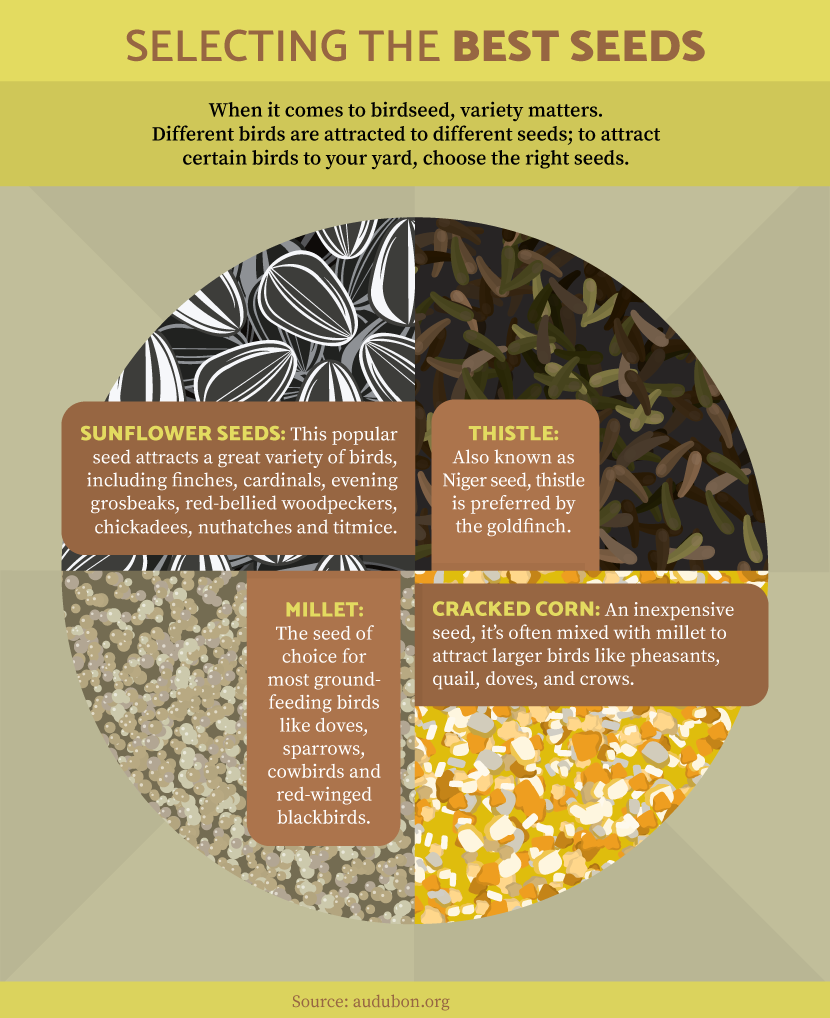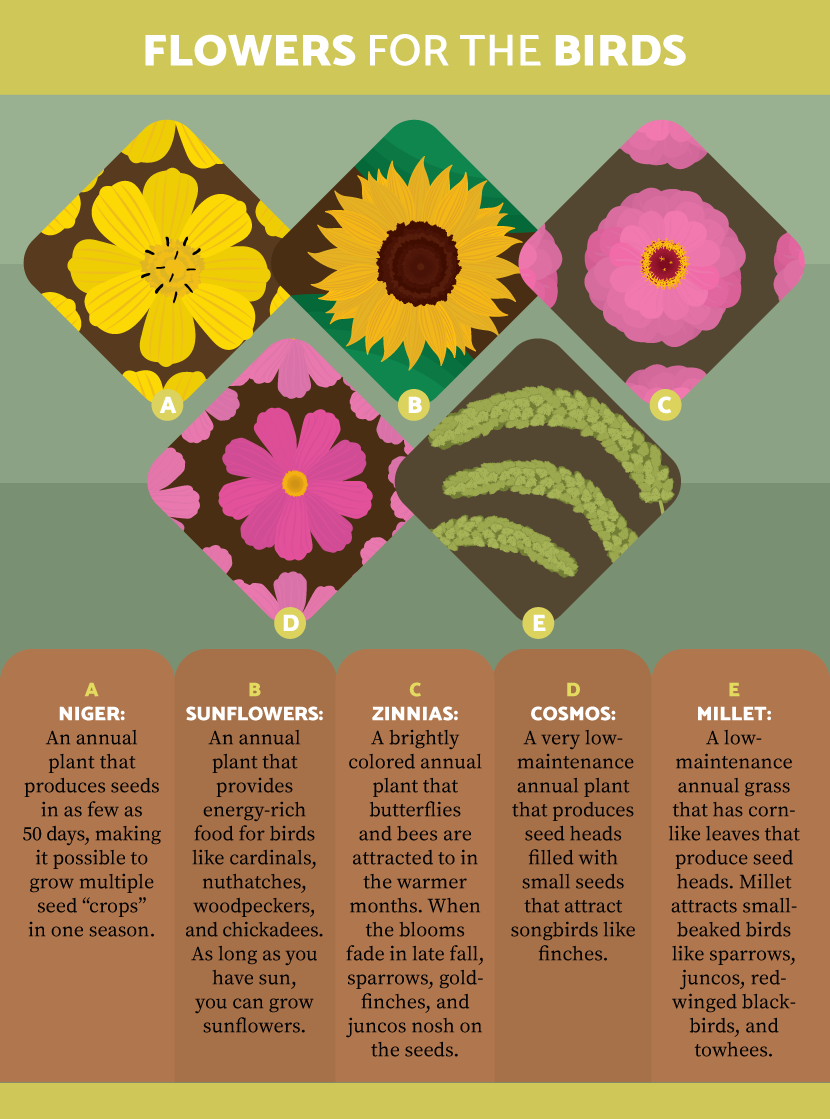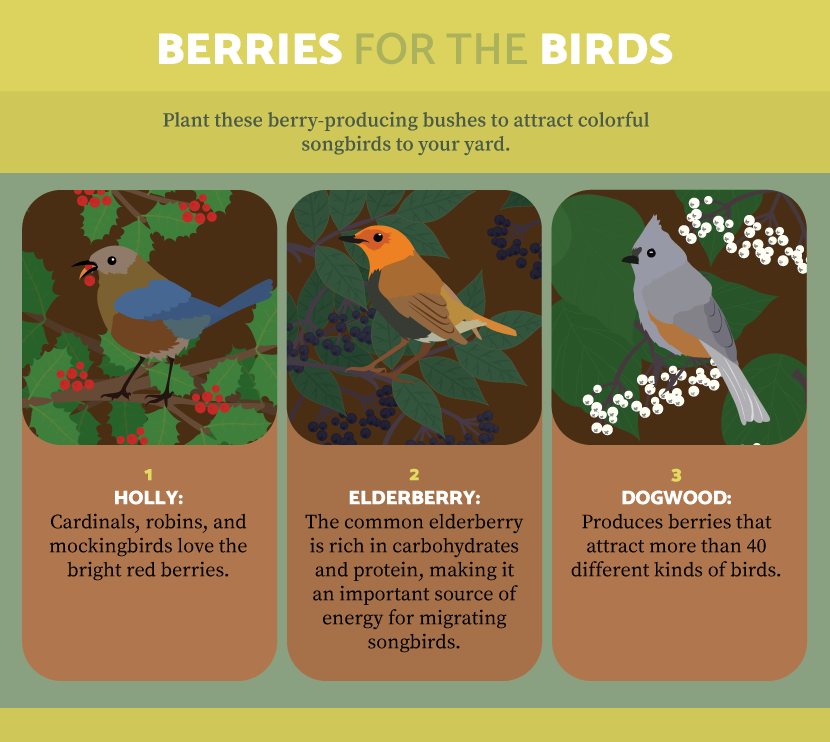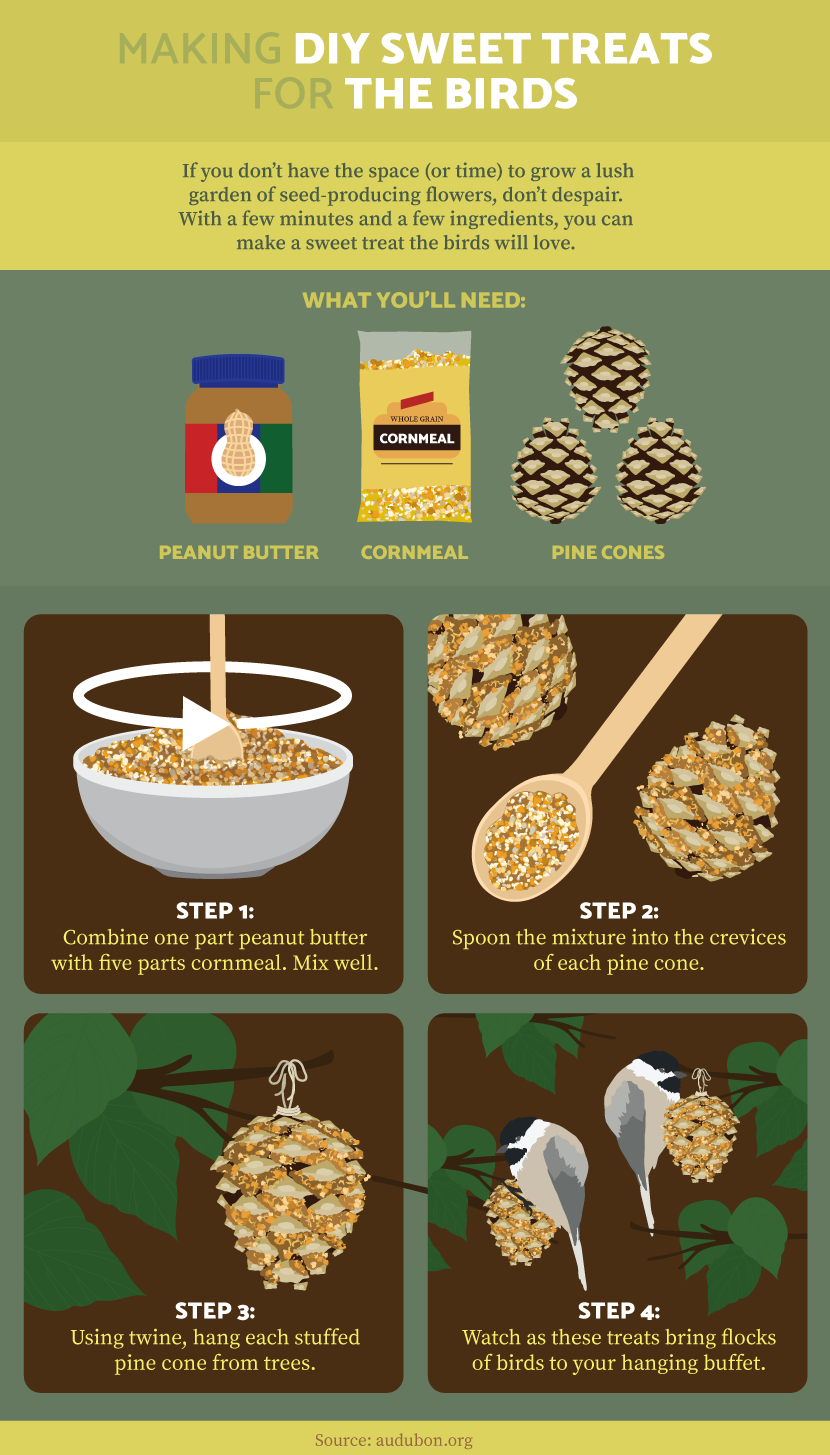Grow Your Own Birdseed
Is filling the birdfeeder breaking the bank? Consider a DIY approach to feeding the birds. Planting a mix of flowers that produce sought-after seeds is a creative way to provide a buffet for the birds – and amp up your garden. The birds will feast from the flowers, eliminating the need to fill feeders.
More than 40 million Americans participate in backyard bird-watching, creating a $6.3 billion market for wild birdseed and bird feeders, according to the Wild Bird Feed Industry Research Foundation Benchmark Study.

Selecting Seeds for Birds
More than 100 North American bird species supplement their natural diets with birdseed. But birds don’t depend on full feeders to survive.
Birds are adaptable creatures; when feeders are empty or their natural abundance of foods diminishes, they will move on to another location where food is more plentiful. If you put out food – either in feeders or by planting a bird-friendly garden – birds will find it, often in a matter of hours!
Birds are choosy creatures. When it comes to their daily meals, specific seeds attract specific birds. If there are certain species you want to draw to your yard, the seeds you choose are important.

Flowers for the Birds
Plant these flowers and let your garden go to the birds:
Niger: This popular birdseed comes from an annual plant. After the beautiful yellow blooms disappear, the flower heads are filled with niger seeds. The plant produces seeds in as few as 50 days, making it possible to grow multiple seed “crops” in a single season.
Sunflowers: The seeds from this easy-to-grow annual are essential ingredients in high-end birdseed because they provide an energy-rich food source for birds like cardinals, nuthatches, woodpeckers, and chickadees. As long as you have sun, you can grow sunflowers. The showy flowers will bloom until the first frost.
Zinnias: In the summer, butterflies and bees feast on the nectar from the pompom-like flower heads. When the blooms fade in late fall, sparrows, goldfinches, and juncos nosh on the seeds. The annual is popular because the flowers come in a rainbow of colors from yellow and orange to red and purple.
Cosmos: Prized for their wispy-looking white, purple, or orange flowers, cosmos produce seed heads filled with small seeds that attract songbirds such as finches. Cosmos are very low-maintenance and bloom until the fall.
Millet: The annual grass has corn-like leaves that turn a beautiful shade of dark purple and golden spikes that produce seed heads that attract small-beaked birds like sparrows, juncos, red-winged blackbirds, and towhees.
Commercial birdseed blends often include millet seeds. Millet thrives in poor soil, making it a great option for inexperienced gardeners.

Berries for the Birds
Birds won’t just flock to seed-producing flowers. Berries are also an avian favorite – and these flavorful berry bushes are no exception!
Holly: At the end of the season, when most plants have succumbed to frost, holly berries are abundant. Cardinals, robins, and mockingbirds love the bright red berries. It’s best to let the birds eat straight from the bushes (the leaves are prickly, making the berries hard to harvest).
Elderberry: Several varieties of elderberry, including black elderberry, blue elderberry, and common elderberry, are rich in carbohydrates and protein, making them an important source of energy for migrating songbirds. Elderberry produces fruit between August and September.
Dogwood: Known for its beautiful flowers, dogwood also produces berries that attract more than 40 different kinds of birds. The plant is available as a bush or tree, making it attractive for gardens of all sizes.

Making DIY Birdseed
You could plant birdseed-producing flowers and let the birds take care of the harvesting. With a little extra effort, it’s possible to remove the seeds from the flowers and create a custom birdseed blend. Making birdseed is as simple as 1-2-3.
- As soon as the flowers die and seeds start appearing, cut the flowers from the stalks. (Check the color of the seeds to see if they’re ready to harvest; if they’re still green, it’s too early).
- Place the flowers in a brown bag and store it for two weeks.
- Shake the bag until the seeds separate from the flowers. Toss the dead flowers and fill up the feeders with the seeds.
Embed the article on your site

